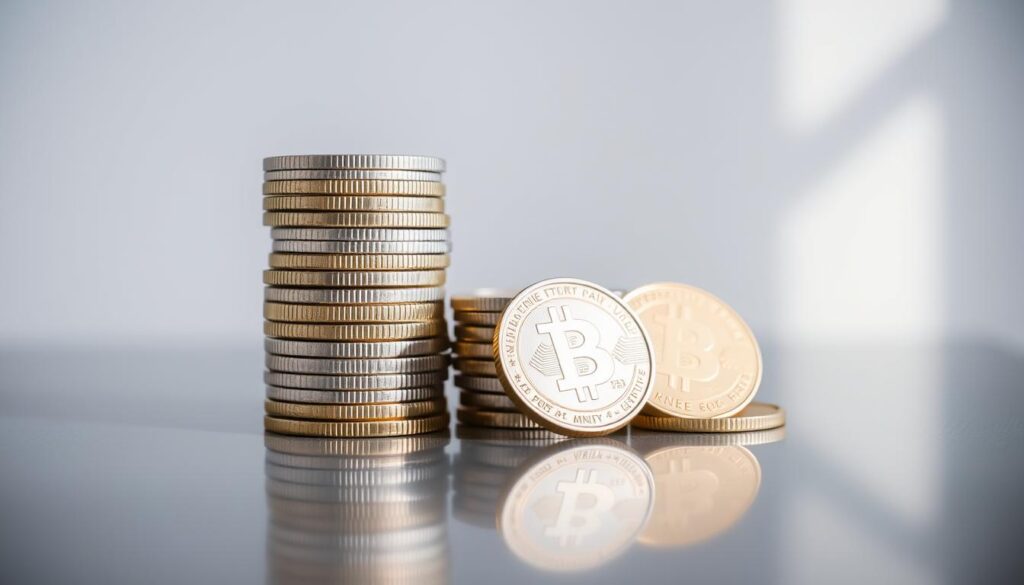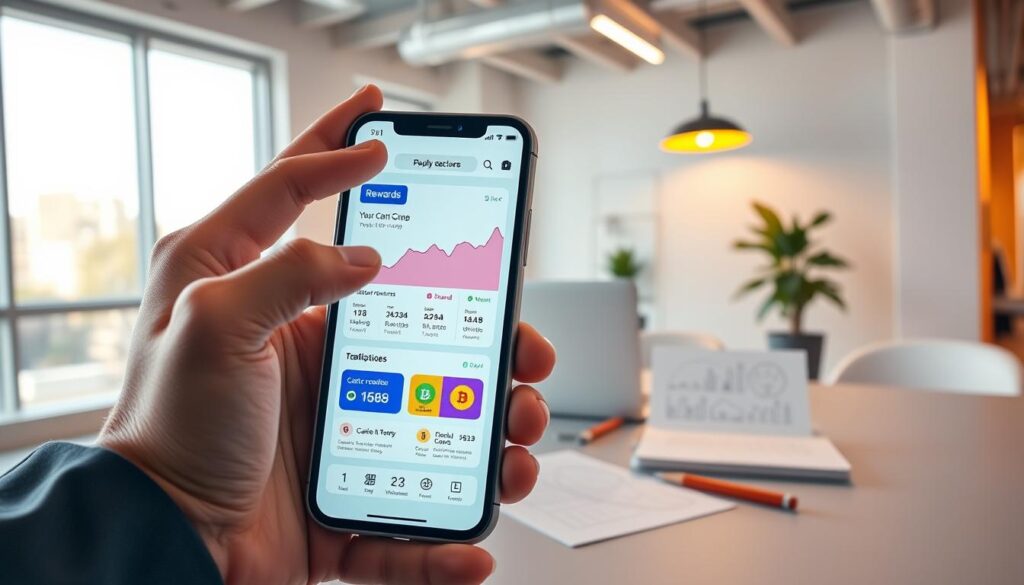Now Reading: How to Transfer Crypto Assets Between U.S. Exchanges
- 01
How to Transfer Crypto Assets Between U.S. Exchanges
How to Transfer Crypto Assets Between U.S. Exchanges

Transferring crypto assets between U.S. exchanges requires careful steps to keep your funds safe. This guide will show you how to move crypto assets between U.S. exchanges without trouble. You’ll learn about fees, network choices, and legal rules to avoid mistakes.
Key Takeaways
- Follow proper steps to protect crypto assets during transfers.
- Transfer fees vary by exchange and blockchain network.
- U.S. regulations affect transfer rules and documentation.
- Confirm wallet addresses to prevent irreversible errors.
- Optimize transfer times to reduce costs and delays.
Understanding Cryptocurrency Transfers in the United States
Crypto transfers in the U.S. have special rules because of local laws and how exchanges work. Before you move your assets, it’s key to understand how these rules affect transferring digital assets in the United States.
What Makes U.S. Crypto Exchanges Unique
Platforms like Coinbase and Binance.US follow strict U.S. laws. They check users’ identities and report big transactions. These exchanges also focus on keeping your money safe with extra security steps.
The Regulatory Landscape for American Crypto Users
- The cryptocurrency transfer methods must follow SEC and FinCEN rules.
- In states like New York, you need special licenses to run exchanges.
- It’s important to keep up with changing laws to avoid trouble.
Common Terminology in Crypto Transfers
Here are some important terms:
- Blockchain confirmations: These are checks that make sure a transaction is real.
- Gas fees: These are costs for using networks like Ethereum to send money.
- Network protocols: These are the rules for moving assets from one address to another.
Why You Might Need to Transfer Crypto Assets Between Exchanges
Many people move their crypto to different platforms to get the best deals. They look for places with lower fees for trading or taking out money. For instance, Coinbase might have better prices for Ethereum than Binance.US.
Some users want to get altcoins that aren’t on their main platform. Kraken has rare tokens like SOLANA, while Gemini focuses on big names.
- Exclusive promotions: Platforms like Gemini sometimes don’t charge for transfers for new users.
- Features matter: Kraken’s staking programs or BlockFi’s lending options need you to move your money.
- Risk management: Spreading your assets across different exchanges can protect against hacking or downtime.
Policy changes can also push users to move their assets. If an exchange stops serving your area, like Binance.US did, you need to move your money. Also, some platforms limit how much you can take out each week.
Knowing these reasons helps make the effort and cost of switching exchanges worth it. It ensures users make smart choices about moving digital assets in the U.S.
Essential Preparations Before Initiating a Transfer
Before you start moving crypto assets between U.S. exchanges, you need to do some important checks. Skipping these steps can lead to delays, extra fees, or even security issues. Getting ready the right way helps keep your funds safe and makes the process smoother.

Verifying Account Status and Limits
First, log into both exchanges. Make sure your account is verified. Unverified accounts might not let you transfer. Use trusted resources to check if there are any withdrawal limits. Remember, there might be daily or yearly limits that affect your transfers.
Security Checks to Perform
- Turn on two-factor authentication on both platforms.
- Double-check that your email and phone numbers are up to date for verification codes.
- Don’t use public Wi-Fi for transfers; stick to secure, password-protected networks.
Documentation You May Need
- Keep transaction IDs from past transfers handy.
- Save emails about withdrawals or deposits.
- Take screenshots of your account details for any disputes.
Keep records of everything you do. Being well-prepared lowers the risk of problems and makes sure you follow U.S. rules.
Step-by-Step: How to Transfer Crypto Assets Between U.S. Exchanges
Transferring cryptocurrency exchange transfers needs careful steps to avoid mistakes. Each action is crucial to ensure assets are moved correctly.
Locating Your Destination Wallet Address
First, go to your wallet section on the destination exchange. Copy the address there. Make sure it’s for the right blockchain network, like Ethereum for ERC-20 tokens.
Check the address format to avoid mistakes. Wrong addresses can mean losing your money forever.
Initiating the Withdrawal Process
- Log into your source exchange account and find the withdrawal section.
- Choose the cryptocurrency type and paste the destination address. Make sure it’s for the right network, like BSC for BNB tokens.
- Enter the amount you want to transfer and check the fee estimates before you go ahead.
Confirming Transaction Details
Double-check everything: wallet address, network type, and fees. A small mistake can cause big problems. Many exchanges have a final confirmation screen. Don’t skip it.
Tracking Your Transfer
Use a blockchain explorer like Etherscan to track your transfer. Most exchanges update their platforms once the network confirms the transfer. This usually takes 3–10 minutes for fast networks.
Wait for at least three blockchain confirmations before thinking the transfer is done.
Security Best Practices for Crypto Transfers
Keeping your crypto transfers safe is crucial. Follow these steps to protect your funds during U.S. exchange asset transfers. Always double-check details to avoid mistakes.
- Whitelist approved addresses to block unauthorized withdrawals. Confirm recipient details match exchange records before proceeding.
- Enable two-factor authentication on all accounts. Use hardware security keys like YubiKey for high-value cryptocurrency transfer methods.
- Avoid public Wi-Fi networks when initiating transfers. Use encrypted connections and updated software to block malware targeting clipboard data.
- Watch for phishing attempts mimicking exchange interfaces. Never click links from unsolicited emails requesting login details.
Test transfers with small amounts first. Verify wallet addresses accuracy through multiple channels, including direct contact with the receiving platform. Regularly update apps like MetaMask or Trust Wallet to patch vulnerabilities. Major exchanges like Coinbase enforce whitelisting, but users must still monitor transaction confirmations. Resources like Top Cryptocurrency Exchanges list platforms with robust security protocols. Prioritize these features to minimize risks during every transfer.
Understanding Transfer Fees and Minimizing Costs
To save money on cryptocurrency exchange transfers, it’s key to understand fees and when to make moves. Major U.S. platforms have different pricing. Comparing them can help you save. Here’s how to find savings without risking security.
Fee Structures Across Major U.S. Exchanges
Exchanges like Coinbase, Gemini, Kraken, and Binance.US have different fee models. For instance:
- Coinbase charges fixed rates for Bitcoin but percentage-based fees for smaller coins.
- Gemini offers free withdrawals for top-tier users but charges others per transaction.
- Binance.US has flat fees for ERC-20 tokens but higher costs for low-volume altcoins.
Timing Your Transfers to Reduce Costs
Ethereum transfers get more expensive during busy times. Use tools like Etherscan or GasNow to check network congestion. Sending assets late at night or on weekends can cut gas fees by 30% or more.
Alternative Transfer Methods to Consider
Switching to cheaper networks can save money. Here’s how:
- Convert Ethereum assets to XLM or XRP before transferring—they have faster, cheaper transfers.
- Use exchange loyalty programs: Some platforms offer free transfers for high-volume traders.
- Compare direct exchange-to-exchange transfers vs. routing through a personal wallet to avoid double fees.
Making smart choices in timing, networks, and platforms can lead to big savings over time. This is especially true for regular how to transfer crypto assets between U.S. exchanges.
Choosing the Right Networks for Your Crypto Transfers
Choosing the right blockchain network is key for easy crypto transfers. In the U.S., you’ll deal with different networks like ERC-20 and BEP-20. Each network affects how fast, how much it costs, and if it works with U.S. platforms.
Comparing ERC-20, BEP-20, and Other Networks
Ethereum’s ERC-20 and Binance Smart Chain’s BEP-20 are top choices. But, there are important differences. Consider these:
- ERC-20: Most U.S. exchanges support it but fees can be high during busy times.
- BEP-20: It’s faster and cheaper but only works with Binance platforms like Binance.US.
- Solana: It’s quick but not as common for U.S. crypto exchanges.
Network Congestion and Transfer Times
Network congestion affects how fast and how much you pay for transfers. Ethereum can be slow when it’s busy. But, BSC’s BEP-20 is often quicker. To avoid delays:
- Use tools like Etherscan to check network activity before sending.
- Adjust gas fees during busy times to get your transactions through.
- Choose Solana for fast transfers when its network is clear.
Make sure the exchange you’re sending to supports your chosen network. This prevents mistakes when moving digital assets in the U.S.
Common Pitfalls When Moving Cryptocurrencies Between U.S. Platforms
Mistakes when moving cryptocurrencies between U.S. platforms can cause big losses. Here are the most common errors to avoid:
- Wrong blockchain networks: Sending ERC-20 tokens to a BSC (BEP-20) address can lose your money forever. Always check the network matches your asset.
- Missing memo fields: Not adding XRP’s destination tag or XLM’s memo when sending digital assets within the U.S. means lost transactions. Look up exchange guides for these fields.
- Ignoring minimum amounts: Some platforms won’t transfer less than $50. Make sure you meet the minimum to avoid failed transfers.
- Fee miscalculations: High gas fees on Ethereum can take a big chunk out of small transfers. Use fee calculators before you send.
- Confusing internal transfers: Internal transfers within an exchange are quick but only work on the platform. On-chain transfers need blockchain confirmations.
Reversing crypto transactions is rare. Once sent to the wrong address, getting it back depends on the platform’s rules. Always double-check addresses, network details, and fees before you send. Even with tools from exchanges like Coinbase and Kraken, you must stay vigilant.
Tax Implications of Transferring Digital Assets in the United States
Transferring digital assets in the U.S. is more than just moving money. You must follow IRS rules to avoid legal trouble. Keeping detailed records and knowing when you need to report taxes is key.

Record-Keeping Requirements for Crypto Transfers
The IRS wants detailed records for all crypto deals. You should log:
- Date of transfer
- Asset types and quantities
- Transaction values in USD
- Exchange names and wallet addresses identifiers
These records help you track costs and prove you followed the rules during audits.
When Transfers May Trigger Taxable Events
Some transfers are considered taxable by the IRS. For instance:
- Changing one cryptocurrency to another (like Bitcoin to Ethereum) is taxable.
- Moving crypto to non-U.S. accounts might need reporting.
- Getting rewards for crypto activities is taxable income.
But, moving the same asset between wallets usually doesn’t trigger taxes.
Using Tax Software for Crypto Transactions
Tools like CoinTracking, Koinly, and Cryptotaxcalculator make tracking easier for U.S. users. They:
- Connect with big exchanges like Coinbase and Gemini
- Use FIFO/LIFO to figure out cost basis
- Help with Form 8949 and Schedule D filings
Still, it’s wise to talk to a tax expert for specific situations. IRS Publication 544 offers more on valuing crypto assets.
Troubleshooting Failed or Delayed Cryptocurrency Transfers
When transfers between U.S. exchanges stall or fail, systematic checks can resolve most issues. Start by verifying the cryptocurrency transfer methods used. Blockchain networks like Ethereum or Solana have different confirmation times. Delayed transfers often stem from blockchain congestion, exchange maintenance, or incorrect wallet addresses.
- Check your transaction status via a block explorer like Etherscan for ERC-20 tokens or BscScan for BNB Chain assets. Confirm if the transfer is “pending” or “confirmed.”
- Review error codes: “insufficient funds” means low wallet balances, while “invalid address” requires double-checking recipient details.
- Contact exchange support directly through in-app chat or email. Major platforms like Coinbase and Kraken prioritize ticket submissions over phone calls.
Transferring virtual currencies domestically may involve compliance holds. Exchanges may freeze transfers if they detect suspicious activity. Provide ID documents or transaction proofs if requested. Some platforms like Gemini offer fee adjustments to speed up slow transactions during peak hours.
- Delayed transactions: Wait 24 hours for blockchain confirmations before resubmitting.
- Failed transfers: Double-check network fees—low fees can cause rejections on busy networks.
- Support contacts: Binance.US uses live chat, while Kraken requires account verification for escalated cases.
Always retain transaction IDs and timestamps. Avoid retrying transfers immediately; repeated attempts risk doubling costs without resolving root issues. Reviewing these steps minimizes disruptions when moving assets between U.S. platforms.
Exchange-Specific Transfer Guidelines for Major U.S. Platforms
When you’re dealing with crypto exchange transactions, it’s key to know the rules of each platform. Big U.S. exchanges like Coinbase, Kraken, Gemini, and Binance.US all have their own ways of doing things. These differences can affect how fast and secure your transfers are.
Coinbase Transfer Procedures
At Coinbase, users can send assets instantly to other linked accounts using the “Send” tab. But, if you’re sending to a new address, it might take 24 hours to go through. Coinbase keeps your account safe with 2FA and biometric login on mobile apps.
Kraken Transfer Procedures
Kraken’s rules on withdrawals depend on your account level. If you’re at Tier 1, you can’t send as much as Tier 3 users. You’ll need to type in the address of the person you’re sending to, and BTC transfers can take anywhere from 1 to 6 hours.
Gemini Transfer Procedures
Gemini’s ActiveTrader platform makes sending crypto easy. But, you need to confirm your withdrawal twice: first on the desktop, then by email or SMS. Before sending a lot of money, make sure the recipient’s address is approved.
Binance.US Transfer Procedures
Binance.US requires you to add recipient addresses to a whitelist before sending. To withdraw the same day, you need to hold your assets for 30 days after buying. If you’re sending more than $10,000 on the mobile app, you’ll need to prove you’re alive.
Before you send any money, check the network fees and how long it takes for confirmation. Tools like Coinbase’s “Delayed Send” or Binance.US’s tracker can help avoid mistakes in crypto transactions.
Advanced Strategies for Efficient Crypto Exchange Transfers
Experienced crypto users can make cryptocurrency exchange transfers better by using advanced tactics. Batching transfers during off-peak hours can save money and keep things flowing. For instance, sending money when the network is quiet can cut fees by up to 50% on sites like Binance.US or Coinbase.
- Layer-2 networks: Use Polygon or Solana sidechains on supported exchanges to speed up transfers with lower costs.
- Automated alerts: Set up tools like Coin Metrics or Nomics to notify you of optimal transfer windows based on fee trends.
- Internal exchange features: Leverage platforms like Coinbase’s free internal transfers to move assets between their wallets without blockchain fees.

Even when optimizing, security is key. Enable two-factor authentication and verify API keys when automating transfers. Always double-check the destination address to avoid mistakes. Also, keep an eye on exchange fee schedules—Kraken and Gemini change theirs often. This way, you can save money by timing your transfers right.
By combining these strategies, you can turn simple how to transfer crypto assets between U.S. exchanges into a smart process. Always test your methods on small amounts first. This ensures they work well with your preferred platforms before you do more.
Comparing Direct Exchange Transfers vs. Wallet Intermediaries
When moving cryptocurrencies between U.S. platforms, you have two main choices. You can go for direct transfers or use a wallet as a middleman. Each option has its own benefits and drawbacks. This guide will help you decide based on your needs.
Pros and Cons of Direct Exchange-to-Exchange Transfers
- Speed: Direct transfers are quicker since there’s no middle step.
- Tracking: Exchanges might keep records of your transfers, which could be a privacy issue.
- Control: You have less control over your assets during the transfer. They go through the exchange’s systems.
When to Use a Personal Wallet as an Intermediary
Using a personal wallet for sending digital assets within the U.S. adds privacy. It’s a good choice for:
- Big transfers that need extra security.
- Strategic timing—hold assets briefly before depositing them.
- Less risk from exchange problems like outages or audits.
Hardware Wallet Considerations
Hardware wallets provide cold storage benefits but need careful setup. Important points include:
- Compatibility: Make sure the exchanges you use, like Coinbase or Gemini, support hardware wallet withdrawals.
- Verification: Most platforms need 2FA for hardware wallet withdrawals.
- Coin Support: Not all hardware devices work with every U.S. exchange’s cryptocurrencies.
To understand exchanges and wallets better, check out this comparison. It can help you match your strategy with your storage and transfer goals.
Mastering the Crypto Transfer Ecosystem for Long-term Success
The crypto market is always changing, and staying ahead is crucial. Users need to know how to move Bitcoin from Coinbase to Binance.US. They also need to handle ERC-20 tokens smoothly across different platforms.
Following exchange policies and network fees is important for efficient transfers. New rules from the IRS might change how we report, so keeping up with updates is key.
Using tools like hardware wallets or cross-chain bridges can make transfers easier. Networks like Polygon or Solana work to speed things up. Tools for tax reporting make things simpler too.
Users should watch for updates from places like Kraken or Gemini. These updates can affect how fast or secure transfers are.
Success in the long run means finding a balance between speed, cost, and safety. Using two-factor authentication and double-checking addresses helps avoid mistakes. Staying informed about the blockchain and SEC can also help.
By following these tips, users can confidently move virtual currencies. Being ready for changes in rules and technology ensures smooth transfers. The crypto world is always changing, but with the right approach, users can stay ahead.
FAQ
How do I transfer crypto assets between U.S. exchanges?
To move crypto assets between U.S. exchanges, first check your account status on both exchanges. Find the right wallet address for the asset you’re sending. Then, start the withdrawal process, confirm the details, and track your transfer to make sure it goes through.
What are common cryptocurrency transfer methods?
There are a few ways to transfer cryptocurrencies. You can do direct transfers between exchanges, use personal wallets, or hardware wallets. Each method has its own benefits and risks. The best one for you depends on the size of the transaction, how fast you need it, and how secure you want it to be.
What are the potential fees associated with cryptocurrency transfers in the U.S.?
Fees for crypto transfers in the U.S. can change a lot. They include withdrawal fees and network fees that go up during busy times. Sometimes, you might also pay to change your crypto to something cheaper before transferring. It’s a good idea to look at fees from different exchanges to save money.
How can I ensure the security of my crypto transfers?
To keep your crypto transfers safe, use strong security like two-factor authentication. Always double-check wallet addresses and avoid using public Wi-Fi for transactions. For big transfers, try a test transaction first to make sure everything works without losing your money.
What should I do if my cryptocurrency transfer fails or is delayed?
If your crypto transfer doesn’t work or is slow, first check its status with a blockchain explorer. Look at common error messages from exchanges and reach out to their support if you need help. Knowing if the problem is with the exchange or the blockchain will help you fix it faster.
Are there tax implications for transferring digital assets within the U.S.?
Yes, moving digital assets in the U.S. can mean taxes. Direct transfers between wallets are usually tax-free, but changing assets or currencies might not be. It’s important to keep detailed records of all your transfers to follow IRS rules.
How do transfer fees differ across major U.S. exchanges?
Transfer fees vary a lot between major U.S. exchanges. Some charge a flat fee, while others take a percentage of the transaction. Exchanges like Coinbase, Kraken, and Binance.US have different fee models. It’s key to compare them before you transfer to avoid high costs.
What precautions should I take when choosing a network for my transfers?
When picking a network for your transfers, think about network congestion, transfer times, and compatibility. Different networks like ERC-20 or BEP-20 have different fees and speeds. Choose a network that fits your needs to avoid extra costs.
Can I use intermediary wallets for my crypto transfers, and what are the benefits?
Yes, using intermediary wallets can add privacy and security to your transfers. They let you manage many transactions without being directly connected to exchanges. This is especially useful for consolidating funds or preparing for big transfers.













